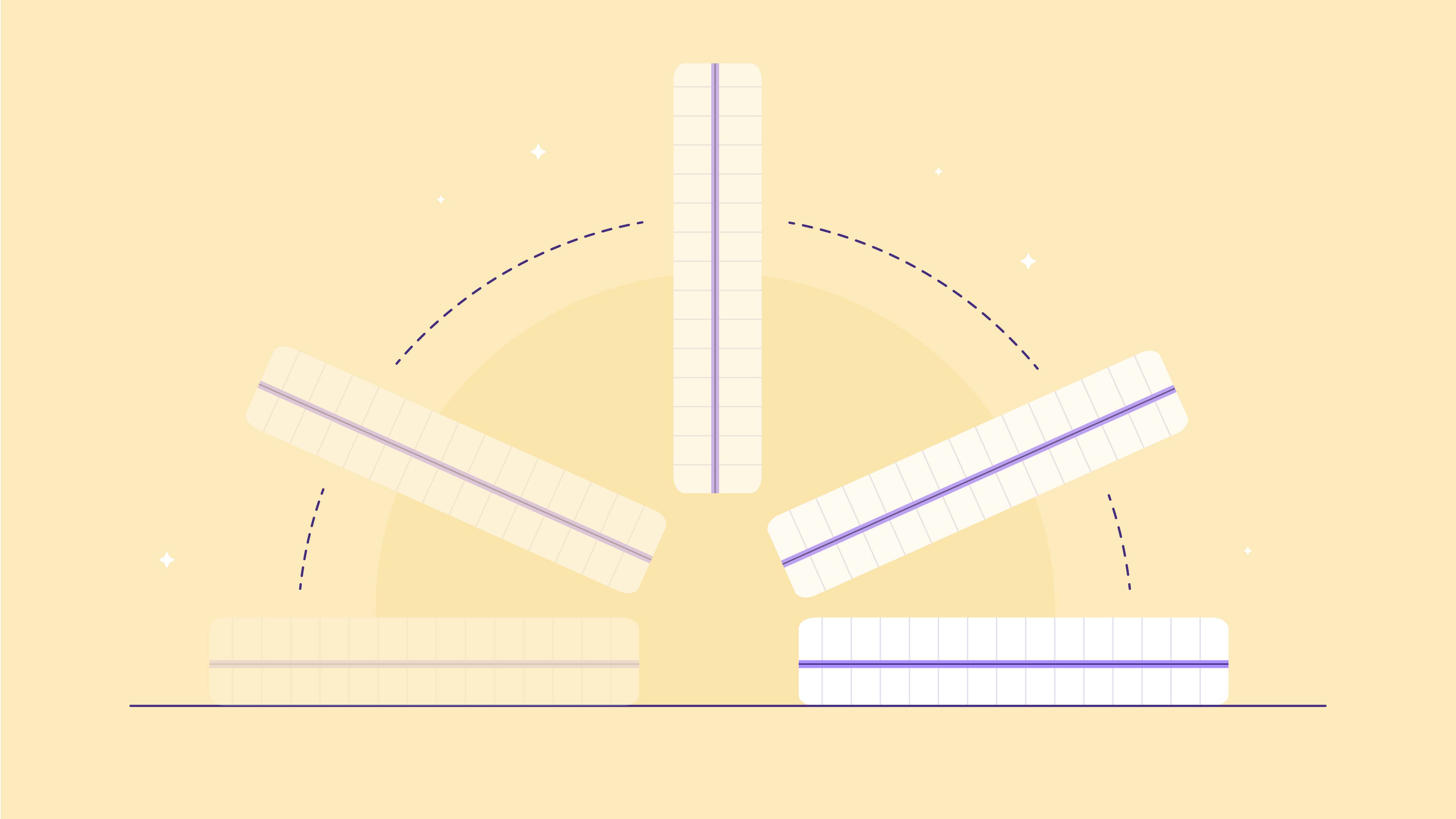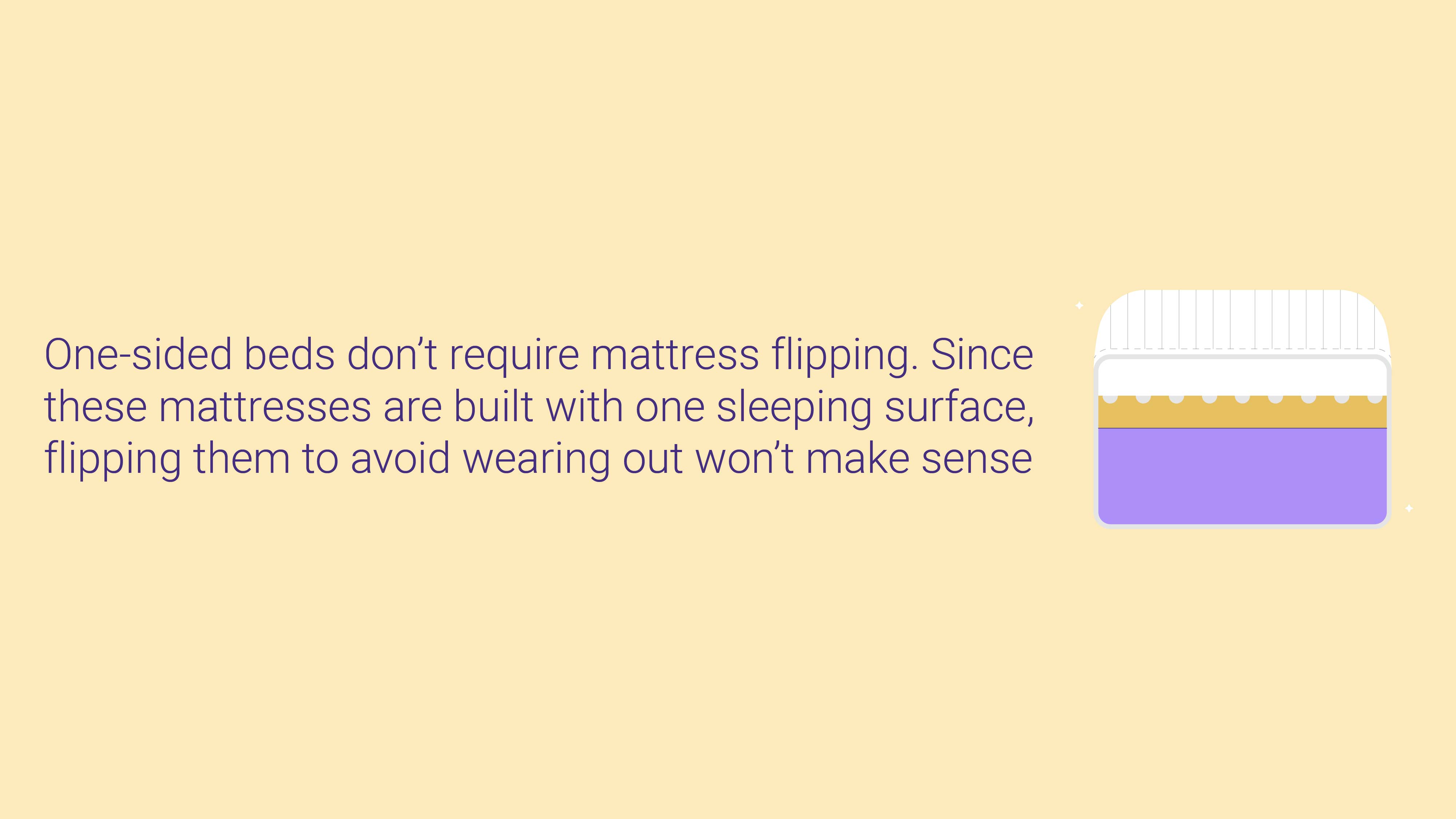
How Often Should You Flip Your Mattress

Remember when you were younger, and every so often your mother told you to flip your mattress? At the time, you probably didn’t know this one task preserved your sleep quality.
We all know a mattress’s main job is to provide comfort and to support a neutral spine. However, even the best mattresses wear out over time. Constant use causes the material to weaken, resulting in indentations, which can lower your sleep quality.
In this article, you’ll learn the difference between flipping and rotating a mattress, and how often you should add this task to your to-do list. We’ll also discuss which mattresses should be flipped and which should only be rotated.
The Difference Between Flipping and Rotating

As a quick reference, when we say “flip,” we mean the action of turning the mattress from one sleeping surface to another. Here’s how to correctly flip your bed.
- Rotate the mattress clockwise by 90 degrees, so it’s perpendicular to the foundation.
- Raise the bed to its side.
- Shift the mattress, so it has room to lay on its opposite surface.
- Lower the mattress, so the top side lays face down.
- Rotate the mattress clockwise, so it’s back in alignment with the foundation.
To rotate the mattress simply means to move the head of the mattress toward the bed’s foot, using a 180-degree rotation.
Rotating a mattress usually takes two people. This makes the process easier and quicker.
Moving any furniture from your bed and stripping off the bedding will reduce obstacles and give you a better grip on the mattress. It will also avoid unnecessary furniture damage.
You’ll need to lift the mattress straight out of the bed frame and step down toward the footboard, along the side of the foundation, away from the headboard, then rotate the bed. Doing this can prevent any damage to the mattress.
How Often Should I Rotate My Mattress?
No mattress model is the same. Every brand suggests you rotate your mattress after different periods of time. The bed’s care tag states how long you should sleep on the mattress before rotating it.
If you don’t have access to your mattress’s care tag, we recommend rotating and flipping your bed once every three to four months. Mark the assigned days down on your yearly calendar so you don’t forget.
To Flip or Not to Flip?
We have more mattress types to choose from than we did 20 years ago. Innerspring, hybrid, memory foam, latex, and air beds are all maintained differently, and, as it turns out, flipping some mattresses does more harm than good.
Most modern mattresses are built from the base up— using specific materials, layers, and customizations to give sleepers better support than dual-sided beds. (Dual Beds were popular 20 years ago— before the rise of latex and memory foam mattresses.)
Before we move on, let’s explore the definition of a dual-sided bed and why modern mattresses are different.
Dual-sided beds are most likely the type of mattress you slept on as a kid. Dual-sided mattresses are constructed supportive core to be in the middle of the mattress so both sides are available to use for sleep.
The idea was to offer two firmness options, so the user could switch between the two sides. This design extends the life of the mattress, as well, since it gave one side a “break” while the other was being used.
Today, mattresses are constructed from the base up. This allows for increased support and contouring. Additionally, more durable materials are used to extend the life of the mattress.
One-sided beds don’t require mattress flipping. Since these mattresses are built with one sleeping surface, flipping them to avoid wearing out won’t make sense. In fact, it might cause the mattress to deteriorate faster. Sleeping on a one-sided bed’s base can void the warranty because it compromises the material’s integrity— the core of the mattress included.

In a dual mattress, the comfort layers are on either side of the mattress. With pressure on either side of the mattress, the support layer will compress causing a faster-sagging mattress.
If you are unsure whether to flip or rotate, err on the side of caution. Read the manufacturer’s guidelines and care tag. We suggest never flipping a mattress if the product wasn’t marketed as a dual-sided mattress.
Rotating and Different Mattress Types
While most mattresses on the market today aren’t flippable, most can be rotated. Let’s discuss how to properly care for each mattress type.
Memory Foam Mattresses
Most foam mattresses are designed with specific layers and will not operate as intended if turned upside down. By sleeping on the bed’s support core instead of its top comfort layers, you can damage the materials, speed up deterioration, and void your warranty.
Sleeping on the wrong side of the mattress will leave the sleeper without the conforming properties in the topmost layers.
Latex, Hybrid, and Pillow-Top Mattresses
Mattress companies manufacture the layers of their latex, hybrid, and pillow-top mattresses in a very specific way to allow the sleeper a customized sleep experience.
Bed flipping renders these specialized layers useless. You won’t receive the benefits of the mattress if it’s upside down. Instead, regularly rotating ensures the bed will wear out evenly without disrupting your sleep quality and damaging the mattress
If you flip a pillow-top innerspring mattress, you’ll end up sleeping directly on the coils, placing a pillow-top layer at the bottom. The plush material inside will compress and won’t perform as a comfort layer should.
A hybrid mattress is a combination of memory foam, latex, and coils. Flipping a hybrid over will not only damage the materials but result in a hard, uncomfortable sleep surface.
A flipped latex mattress disintegrated as rapidly as memory foam and pillow tops. Sleeping on the wrong side will accelerate material disintegration and force you to purchase a new mattress long before you originally planned and void your current warranty.
Air Mattresses
Releasing air or inflating air mattresses’ can adjust the firmness. Because the materials in the bed can’t be compressed, the bed doesn’t need flipping and rotating.
You only need to rotate your air mattress if it has a comfort layer, since this will minimize wear on that layer.
Tips and Tricks
- Get Some help: You’ll want to recruit help to turn the bed, especially if it’s heavy. Turning it yourself could damage furniture or other decor in your room.
- Prep the space: Accidents happen. To evade a mishap, pull all furniture and breakables away from the area.
- Vacuum the underside of the mattress: Every time you flip or rotate your bed, you should take the opportunity to give it a thorough vacuum job, which will prevent your mattress from sliding off the foundation as it ages due to a build up of oils and dandruff.
- Change the sheets: Rotating your mattress gives you the opportunity to change and clean your sheets. Removing the sheets will also allow you to grip the mattress much easier as you rotate it.
- Rotate the box spring: Don’t forget about your box spring. You should rotate the box spring as well so it will maintain the same lifespan as your mattress.
The Time to Rotate Your Mattress is Now
If you haven’t rotated your bed in six months, you should make time to do it soon. While it might not make an immediate difference, you’ll appreciate the prolonged life of your bed and increased comfort. Getting into a habit of regularly rotating your mattress can ensure it lasts as long as it’s supposed to.
